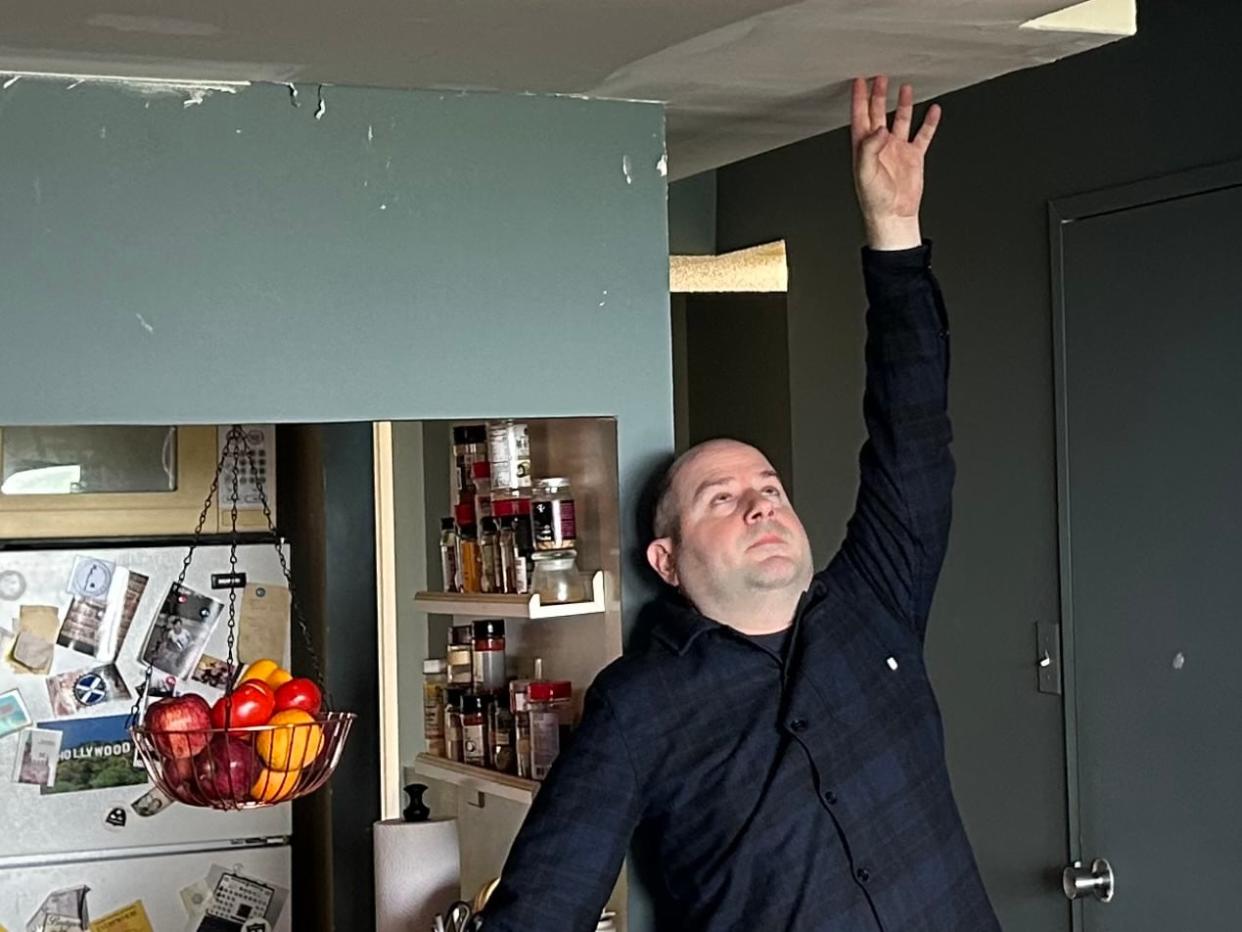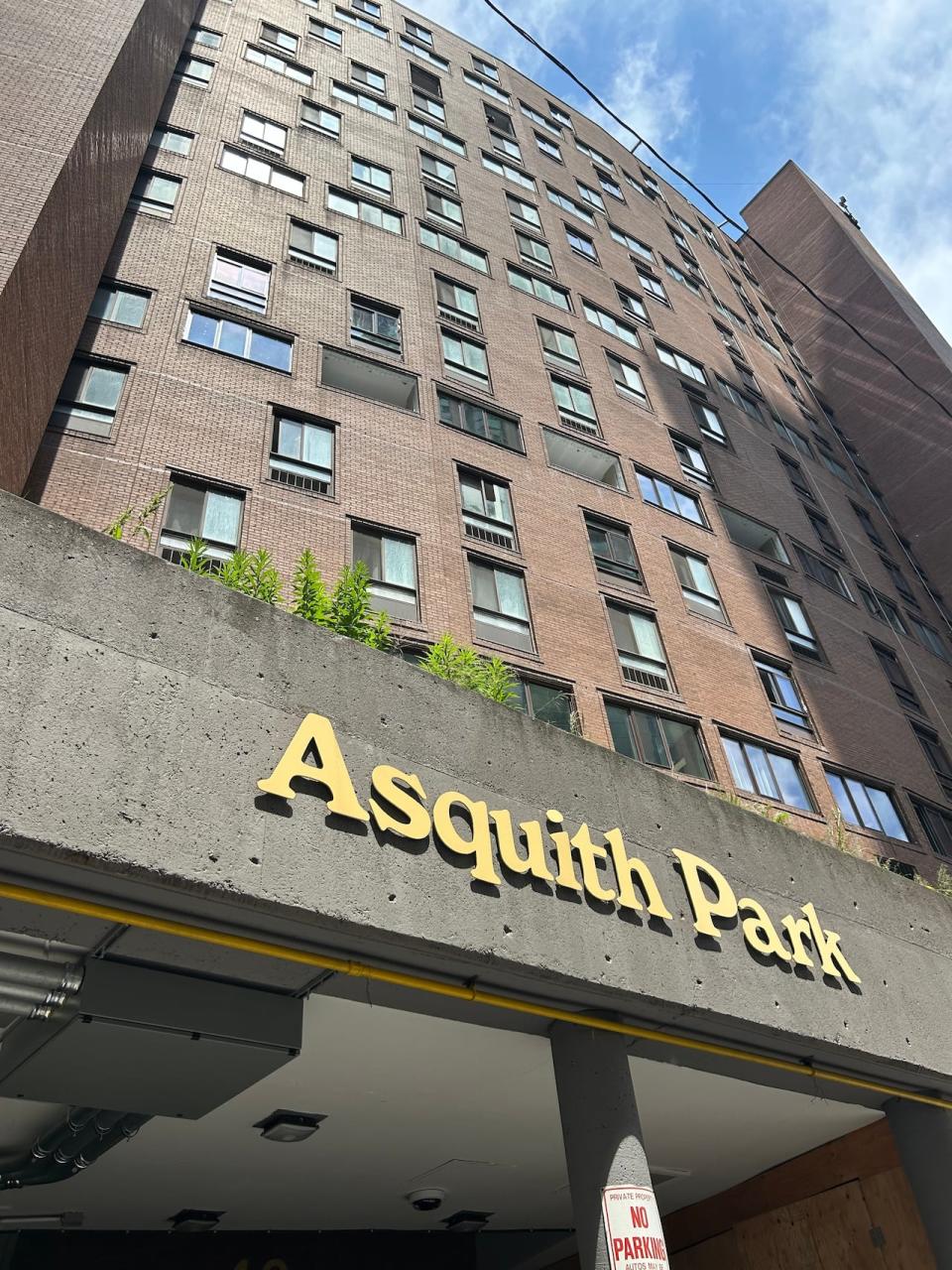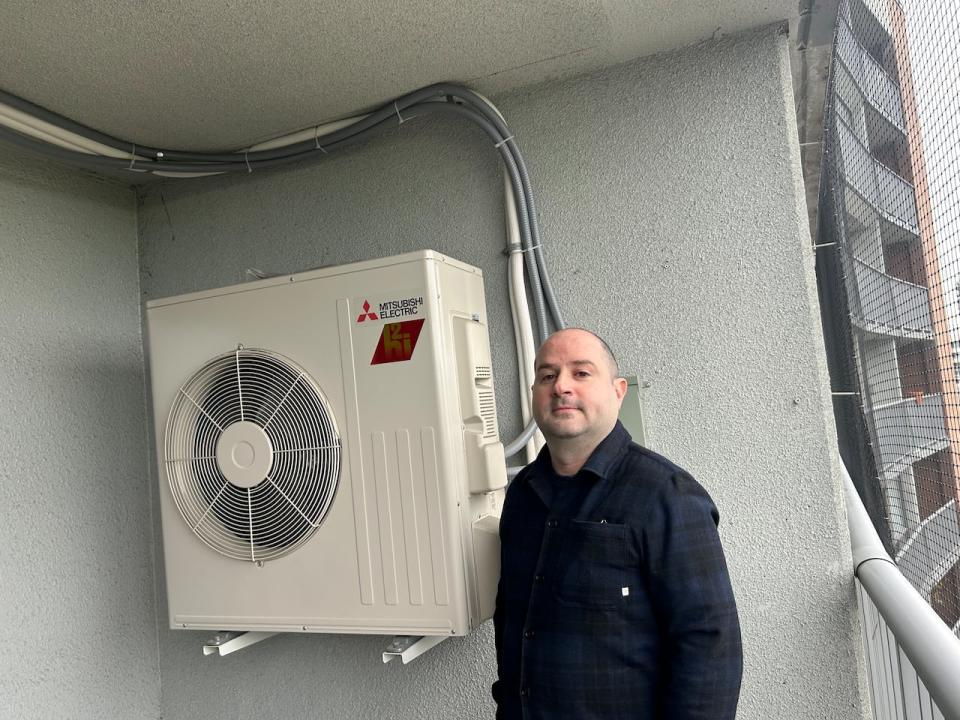TCHC lowers man's ceiling below city standards

A Toronto Community Housing (TCHC) resident is speaking out after the social housing agency lowered the ceiling in part of his apartment to less than seven feet — well below the city's regulatory standard.
"It's extremely claustrophobic," Robbie James told CBC Toronto. "It's very dark. It has the atmosphere of a basement boiler room."
In an email, TCHC said the change was necessary to accommodate ductwork for a heat pump system it's installing in the 17-storey Asquith Avenue building.
The units already had lowered ceilings due to existing ductwork, the agency said, but the heat pumps required a further drop, putting the new ceiling heights well below the city's minimum.

All 192 units in the Yonge-Bloor area building are having heat pumps installed as an energy-saving measure. Tenants in 74 units will have their ceilings lowered to accommodate the change. (Mike Smee/CBC)
TCHC said it got special permission from the city for the unorthodox height. Provincial building regulations say ceilings can't be built lower than about 7.6 ft, or 2300 mm. But in order to install the heat pumps, the city granted a TCHC to go lower than 7 ft.
City staff have not yet responded to questions about why an exemption was granted.
74 units lose ceiling space
The Asquith Avenue building, in the neighbourhood of Bloor and Yonge, is the third TCHC building to have heat pumps installed. TCHC says all 192 units will have the pumps installed, of which 74 will require new lower ceilings.
TCHC said two similar projects planned to begin later this year won't require lower ceilings.

Geordie Dent, of the Federation of Metro Tenants Associations, says he's seeing more complaints from tenants about landlords installing energy-saving devices in their buildings without regard for the noise and inconvenience that retrofitting can cause. (Li Yanjun/CBC)
Heat pumps are electrical motors that pump hot air out of a living space in summer and cooler air in winter. They are "very efficient heating and cooling systems and can significantly reduce your energy costs," according to Natural Resources Canada's website.
However, existing ductwork often has to be retrofitted to accommodate the new system, which can mean renovations — as is the case at 40 Asquith Ave.
Even beyond Toronto Community Housing, a tenant advocate says renovations to install green technology, such as heat pumps or energy efficient windows, are an increasing source of friction between landlords and tenants.
"We're seeing this en masse," said Geordie Dent, executive director of the Federation of Metro Tenants Associations.
"Landlords are continuously trying to increase their profits, continuously trying to reduce their costs, and this is one of the ways they do it," he said.

Heat pumps, like this one installed in Robbie James' unit, can be more cost effective than traditional heating and cooling systems, but they often require expanded ductwork. (Mike Smee/CBC)
After the inconvenience of construction, Dent says tenants are often then told they'll have to pay higher rent since their units have been upgraded.
"It's not really what's supposed to be happening," he said. "You're not supposed to throw the tenant under the bus."
In the case of TCHC, the agency said it's doing the renovations because it's "mandated to invest in energy-efficient projects, like this one, as we advance towards the City's goal of achieving net-zero emissions ... the benefits of the new HVAC system at 40 Asquith – for both energy efficiency and tenant comfort – outweigh the slight deviation from the (building code) requirements for ceiling heights."
TCHC also says tenants were given plenty of opportunity to express their concerns before the work began, more than a year ago, and while the work was underway.
James, who's lived in his one bedroom apartment for about seven years, says his objections were ignored. Now, he would like to see the changes rolled back. He says they were never necessary, and that his previous heating/cooling system was satisfactory.
"I applaud any effort to increase energy efficiency," James said. "But buildings that are already electrically heated should not have heat pumps put in, especially if it means tenants have to endure ceiling heights so low they're almost unliveable."


